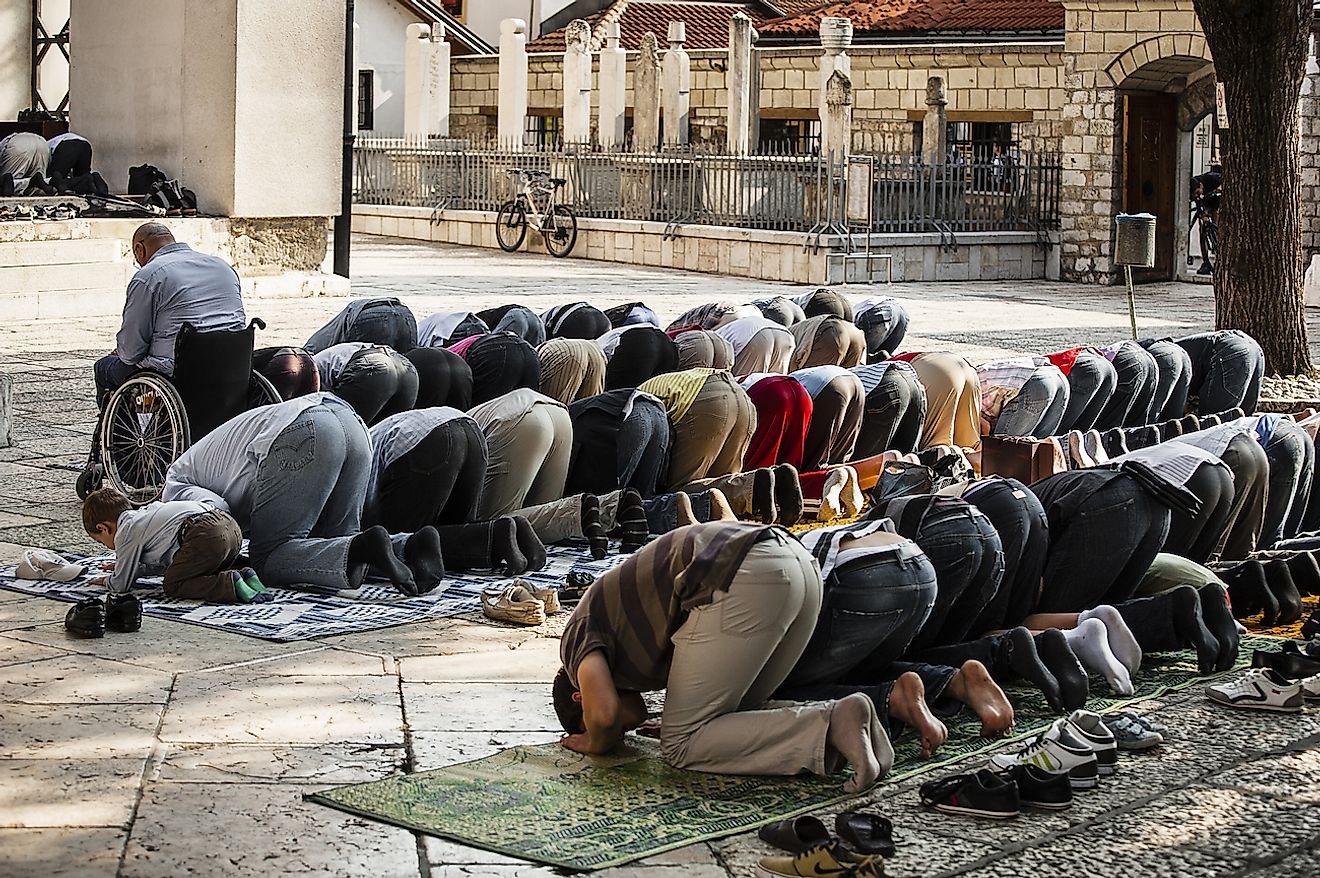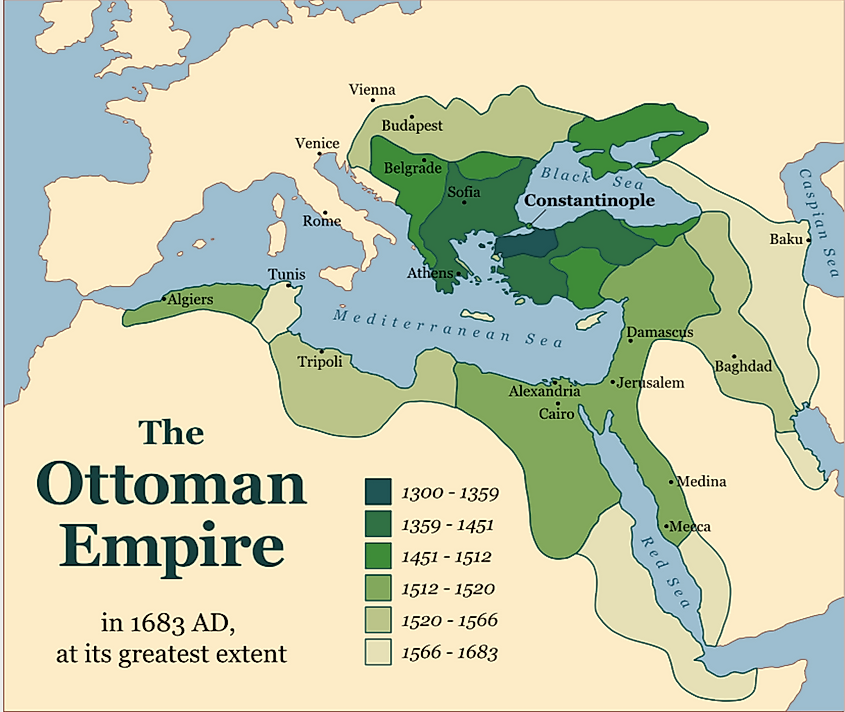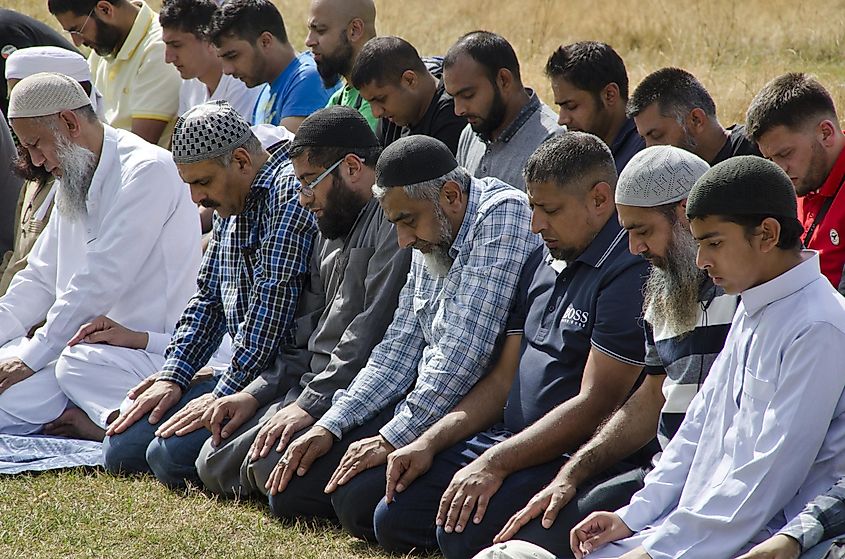15 European Countries With Most Muslims

- By 2050, Muslims could account for roughly 11.2% of the total European population.
- Sweden is projected to have the highest share of Muslims (12.4%) in total population among the Western European countries by 2050.
- Between mid-2010 and mid-2016, Europe received around 2.5 million Muslims.
Islam is Europe’s second-largest religion. Muslims are a minority group in most of the European countries. This community represents around 5% of the total population of Europe. However, according to projections by Pew Research Center, the Muslim population of the continent will soar in the coming decades. By 2050, it could account for roughly 11.2% of the total European population. According to projections, even if immigration is completely banned, Muslims would still represent a significant 7.4% of the European population in 2050. Between 2010 and 2016, the share of Muslims in the continent’s population rose by over 1% from 3.8% to 4.9%.
A Brief History Of Islam In Europe

While Islam has a relatively recent history in the countries of Western Europe, it has a long history in the Balkans region of the continent. Islam first arrived in southern Europe in the 8th to 10th centuries via the invaders from North Africa. However, Christian conquest of the region later led to the end of Islamic reign and conversion of a large section of the region's Muslim population to Christianity. Islam, however, had a stronger presence in southeastern Europe where it arrived following the conquest of Persia by Muslims in the 7th century. Later, the Muslim Ottoman Empire invaded and conquered vast swathes of land belonging to the Bulgarian, Serbian, and Byzantine Empires. During the 14th to 15th centuries, the European region ruled over by the Ottoman Empire had a large Muslim population. However, by the time the Ottoman Empire collapsed in 1922, the Muslim population of the region had already dwindled except for some Balkan countries that continued to host large Muslim populations. But most of these countries are now secular.
European Countries With Greatest Shares Of Muslims In Their Population

From the table below (data obtained from the Pew Research Center), we can see that the top five countries with the greatest share of Muslims in their population are all from the Balkans region. Kosovo, Albania, and Bosnia rank the highest with 93.8%, 80.3%, and 45.2% of the total population being Muslim respectively. In 2050, the share of Muslims in the population of these countries is expected to increase to 95.2%, 85.9%, and 49.4% respectively. The Republic of Macedonia which had a share of Muslims at 39.3% in 2010 is projected to replace Bosnia and Herzegovina in the third spot with Muslims accounting for 56.2% of the country’s population in 2050.
Among the Western European countries, France, the Netherlands, and Belgium had the greatest share of Muslims in their population in 2010 at 7.5%, 6%, and 5.9% respectively.
Interestingly, Sweden which does not rank among the 15 countries in 2010, is projected to have the highest share of Muslims (12.4%) in total population among the Western European countries by 2050. Sweden will be followed by Belgium with Muslims accounting for 11.8% of its total population. Another new entry tp the list of 15 countries in 2050 would be the United Kingdom with 11.3% of its total population adhering to Islam.
Factors Driving The Rise In Europe’s Muslim Population
Large-scale immigration of Muslims seeking asylum in European countries, as well as those entering the continent for work and education and then staying back, have led to the spike in the continent’s Muslim population. Between mid-2010 and mid-2016, Europe received around 2.5 million Muslims.
In addition to immigration, the relatively young age of the continent’s Muslim population is also responsible for the rise in the community’s population in the continent. The average age of Muslims in Europe was 30.4 in 2016 compared to that of 43.8 years for non-Muslims. On average, Muslim women also bear more children than non-Muslim women.
All these factors act in cohesion to increase Europe’s Muslim population.
15 European Countries With The Highest Shares Of Muslim Populations
| Rank | European Country | Population of Muslims as percentage of total population in 2010 | Rank | European Country | Estimated population of Muslims as percentage of total population in 2050 |
|---|---|---|---|---|---|
| 1 | Kosovo | 93.8% | 1 | Kosovo | 95.2% |
| 2 | Albania | 80.3% | 2 | Albania | 85.9% |
| 3 | Bosnia-Herzegovina | 45.2% | 3 | Republic of Macedonia | 56.2% |
| 4 | Republic of Macedonia | 39.3% | 4 | Bosnia-Herzegovina | 49.4% |
| 5 | Montenegro | 18.7% | 5 | Montenegro | 25.8% |
| 6 | Bulgaria | 13.7% | 6 | Russia | 16.8% |
| 7 | Georgia | 10.7% | 7 | Bulgaria | 15% |
| 8 | Russia | 10% | 8 | Georgia | 14.2% |
| 9 | France | 7.5% | 9 | Sweden | 12.4% |
| 10 | Netherlands | 6% | 10 | Belgium | 11.8% |
| 11 | Belgium | 5.9% | 11 | United Kingdom | 11.3% |
| 12 | Germany | 5.8% | 12 | France | 10.9% |
| 13 | Austria | 5.4% | 13 | Germany | 10% |
| 14 | Greece | 5.3% | 14 | Italy | 9.5% |
| 15 | Liechtenstein | 5% | 15 | Netherlands | 9.4% |











